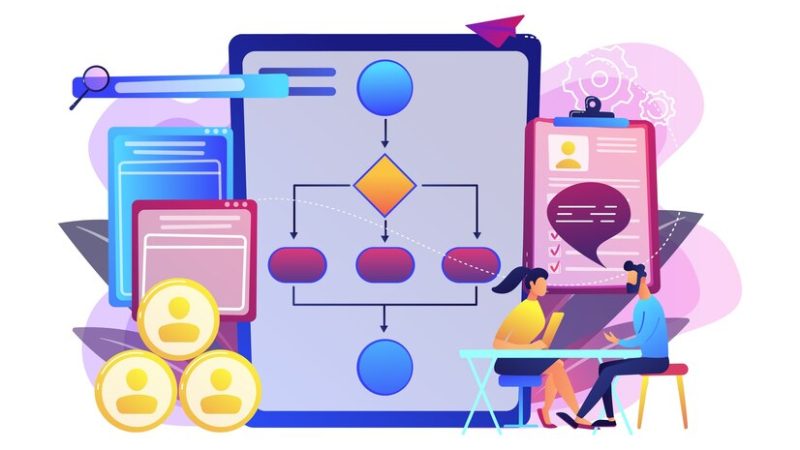Introduction:
Employee engagement is critical to the success of any organization. Engaged employees are more productive, more committed to their work, and more likely to stay with the organization long-term. However, achieving employee engagement can be challenging, particularly with the ever-increasing workload and the need for greater efficiency. Workflow automation software can play a crucial role in driving employee engagement by streamlining workflows, reducing repetitive tasks, and empowering employees to focus on more strategic and fulfilling work. In this article, we’ll explore how workflow automation software can boost employee engagement.
Streamline Workflows:
Workflow automation software can automate repetitive and time-consuming tasks, such as data entry, approvals, and notifications. This automation allows employees to focus on more strategic and fulfilling work, which can boost engagement. When employees are freed from mundane tasks, they can use their skills and creativity to add value to the organization. Additionally, automation can reduce errors and improve accuracy, which can increase confidence and motivation among employees.
Increase Efficiency:
Workflow automation software can also increase efficiency by reducing errors, delays, and bottlenecks in workflows. When workflows are streamlined, and tasks are automated, employees can work more efficiently, which can boost engagement. When employees feel that they are making progress and achieving results, they are more likely to feel engaged and committed to their work. Additionally, increased efficiency can lead to a better work-life balance, which can improve morale and reduce burnout among employees.
Provide Transparency:
Workflow automation software can provide transparency into workflows, tasks, and deadlines. This transparency can help employees understand their roles and responsibilities within the organization. When employees understand how their work fits into the broader context of the organization, they are more likely to feel engaged and committed. Additionally, transparency can help employees identify areas for improvement and suggest process changes, which can boost engagement and improve workflows.
Empower Employees:
Workflow automation software can also empower employees to take ownership of their work and make decisions. When workflows are automated, and tasks are delegated, employees can take on more responsibility and have a greater sense of autonomy. This empowerment can boost engagement by providing employees with a sense of purpose and accomplishment. Additionally, when employees have a say in how workflows are designed and implemented, they are more likely to feel engaged and committed to their work.
Provide Training and Development:
Workflow automation software can provide opportunities for training and development. When employees are trained on the software solution, they can gain new skills and knowledge, which can boost engagement. Additionally, when employees are given opportunities to learn and grow, they are more likely to feel engaged and committed to their work. Workflow automation software can also provide real-time feedback on performance, which can help employees identify areas for improvement and take corrective action. This feedback can help employees feel valued and supported, which can increase engagement and motivation.
Foster Collaboration:
Workflow automation software can foster collaboration by providing a centralized platform for communication and collaboration. When workflows are transparent, and tasks are delegated, employees can work more effectively together. Additionally, when employees are empowered to take ownership of their work, they are more likely to collaborate and share ideas. Collaboration can boost engagement by providing employees with a sense of camaraderie and a shared sense of purpose. Additionally, collaboration can lead to innovative ideas and improved workflows, which can further boost engagement and productivity.
Conclusion:
Workflow automation software can play a crucial role in driving employee engagement. By streamlining workflows, increasing efficiency, providing transparency, empowering employees, providing training and development, and fostering collaboration, workflow automation software can help employees feel more engaged and committed to their work. When employees are engaged, they are more likely to be productive, committed, and willing
to go the extra mile for the organization. By investing in workflow automation software, organizations can create a more engaged and committed workforce and achieve long-term success.
Employee engagement is crucial in today’s fast-paced business environment. With increasing workloads and growing competition, organizations need to do everything they can to retain their best employees. Workflow automation software can help organizations achieve this by providing employees with the tools they need to work more efficiently, collaborate more effectively, and feel more engaged with their work.
As workflow automation software becomes more prevalent, it’s essential for organizations to stay up-to-date with the latest trends and technologies. Organizations need to invest in software solutions that are easy to use, scalable, and customizable to meet their unique needs. They should also consider partnering with a reputable vendor who can provide ongoing support and training.
In conclusion, workflow automation software can help organizations achieve greater efficiency, transparency, and collaboration, all of which can boost employee engagement. By investing in workflow automation software, organizations can create a more engaged and committed workforce and achieve long-term success. As the business environment continues to evolve, workflow automation software will play an increasingly critical role in driving employee engagement and helping organizations stay competitive.








